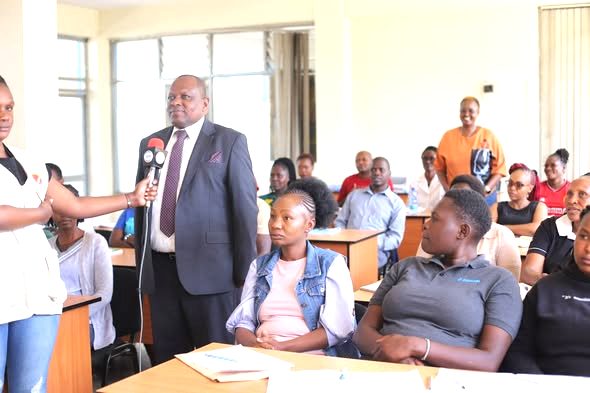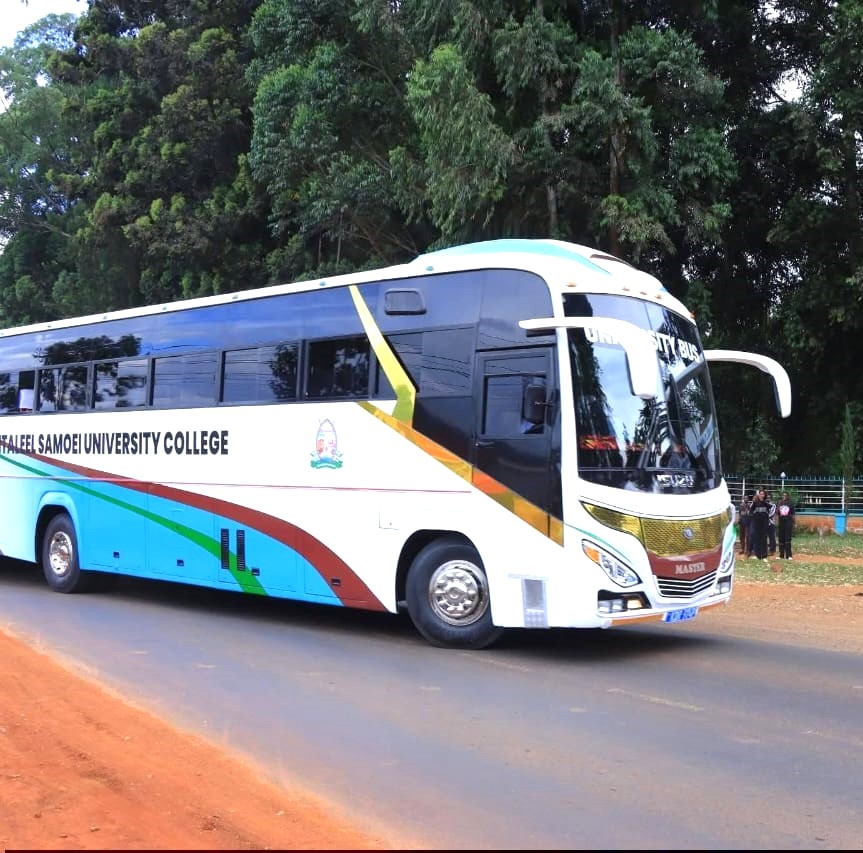Just like the fictional Maracas municipality, the Kenyan political leaders are so scared of innovation.
In John Lara’s The Samaritan, the fictional municipality of Maracas stands as a hauntingly familiar reflection of contemporary Kenya. In this place, corruption thrives, accountability is resisted, and reformers are vilified. At the heart of this allegorical play is a simple yet powerful act of youthful innovation—two students from Sagrada Secondary School design an app to report and document corruption in their municipality. What should be hailed as a technological breakthrough for good governance quickly becomes a source of anxiety and suppression for those in power. Led by Mayor Mossi, the corrupt leadership machinery of Maracas mobilises against the app, exposing the deep-rooted fear that tyrants harbour when faced with the truth.
The students’ app is not just a piece of code. It is a metaphor for transparency, for a generation that dares to dream differently, a generation that is not content with the status quo. Their desire to hold leadership accountable is not born out of malice, but a patriotic yearning for a better, fairer society. Yet, as often happens in Kenya, such noble intentions are met with hostility. Instead of being celebrated, the students are isolated, threatened, and dismissed. Mayor Mossi and his cohorts are terrified—not because the app is defective, but precisely because it works. It exposes the rot they have carefully hidden under officialdom and bureaucratic deceit.
The play does not shy away from pointing fingers. It reveals how systems are rigged to reward incompetence and punish integrity. In Maracas, as in Kenya, whistleblowers are branded traitors, innovators are undermined, and ethical leadership is perceived as a disruption rather than a solution. The very tools meant to enhance civic engagement are weaponised to silence dissent. Mayor Mossi’s administration personifies this twisted logic: an open government is dangerous, and the truth is toxic. The app threatens their very survival, not because it lies, but because it tells the truth too well.
Through satire and symbolic characters, John Lara forces the audience to confront the uncomfortable reality that corruption is not an abstract concept—it is a lived reality. It manifests in the delayed bursary, the collapsed hospital wall, the unlit street, the unpaid worker, and the stolen future. The students’ innovation disrupts this cycle. It offers the citizenry a voice, a chance to say, “This is wrong.” It empowers the ordinary resident of Maracas to report the pothole that never gets fixed, the public project that exists only on paper, and the funds that disappear before reaching the intended beneficiaries.
Yet, the play is not entirely bleak. It subtly celebrates the resilience of those who dare to stand up. The two students are not named by accident. Their courage and clarity mirror the countless young Kenyans who have taken to social media, coding boot camps, and civic platforms to speak up. These are the digital warriors of our time—armed not with guns but with gadgets and goodwill. They represent hope. They symbolise the dawn of a new civic consciousness, one where citizenship is active, informed, and courageous.
READ ALSO:
GPF Kenya, Pepperdine university partner to transform education sector
The resistance to the app is also telling of a broader national malaise. Kenya has often been criticised for having the best laws but the worst implementation. We have vibrant institutions on paper—anti-corruption commissions, auditor general reports, public finance oversight mechanisms—but their impact is blunted by political interference. The Maracas app is a symbolic intervention in this broken system. It attempts to bypass the compromised institutions and return power to the people. Naturally, this poses a direct threat to those who benefit from opacity and chaos.
The parallel with Kenya is unmistakable. How many times have progressive ideas been shot down by those who fear change? How many times have youthful reformers been branded unpatriotic simply for asking uncomfortable questions? The play captures this tension with uncanny accuracy. It invites the audience to ask: Who benefits when reform is resisted? Who loses when the truth is buried? And most importantly, what role does each citizen play in either enabling or challenging this status quo?
John Lara’s The Samaritan ultimately leaves the audience with a choice. Do we remain silent, hoping not to attract the wrath of the corrupt, or do we join the students of Sagrada Secondary School in reclaiming our civic space? Do we dismiss their app as utopian idealism, or do we defend it as the beginning of a national awakening? The app may be fictional, but the struggle it embodies is painfully real. It is the story of Kenya’s battle with its own demons—of a country blessed with brilliance yet burdened by betrayal.
In a poetic twist, it is often the youngest members of society who exhibit the most wisdom. They do not carry the baggage of complicity. They are not dulled by cynicism. Their eyes are clear, and their resolve is firm. The Maracas municipality may not be real, but its lessons are indeed valuable. It teaches us that corruption is not just a leadership problem; it is a societal one. When we ignore, excuse, or rationalise it, we become part of the machinery that buries the truth.
And so, in the end, The Samaritan is not just a play. It is a mirror. It is a rallying call. It is a quiet rebellion wrapped in satire. It challenges us to choose which side of history we want to be on—the side of Mossi and his defenders of decay, or the side of the nameless students who dared to light a candle in the dark.
By Kamomonti wa Kiambati
Kamomonti teaches English and Literature in Gatundu North Sub County.
You can also follow our social media pages on Twitter: Education News KE and Facebook: Education News Newspaper for timely updates.
>>> Click here to stay up-to-date with trending regional stories
>>> Click here to read more informed opinions on the country’s education landscape






